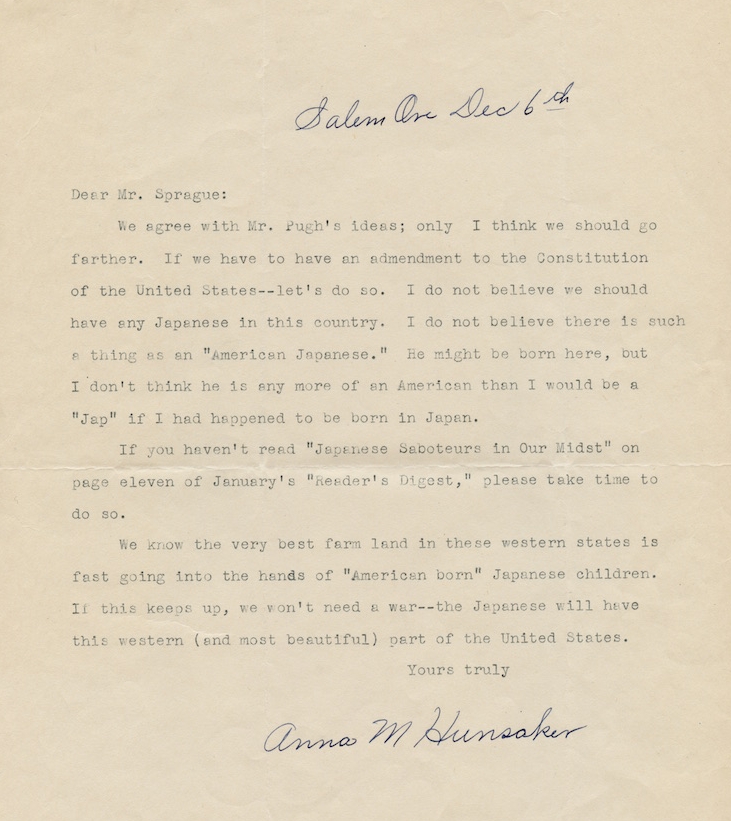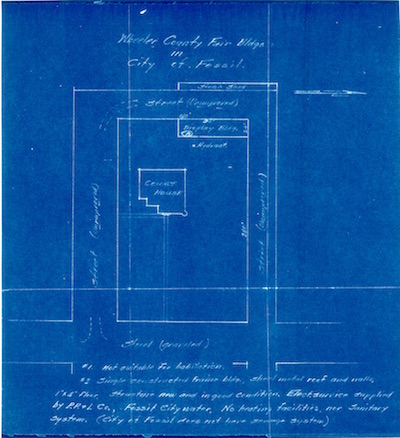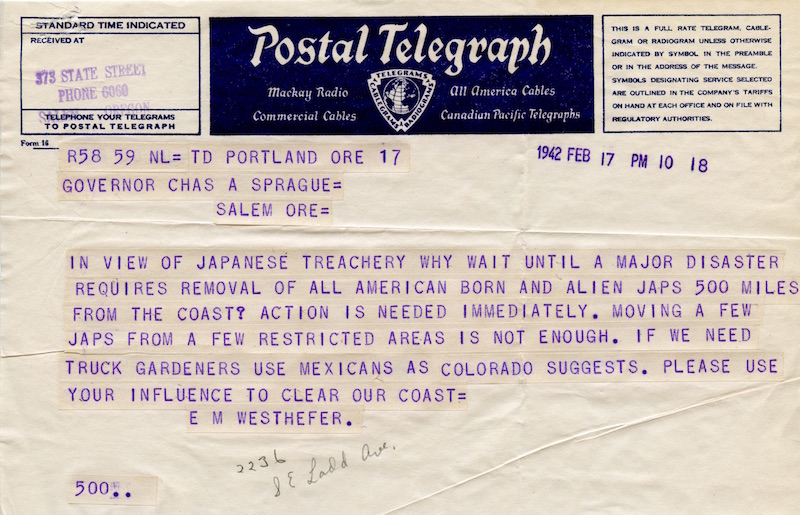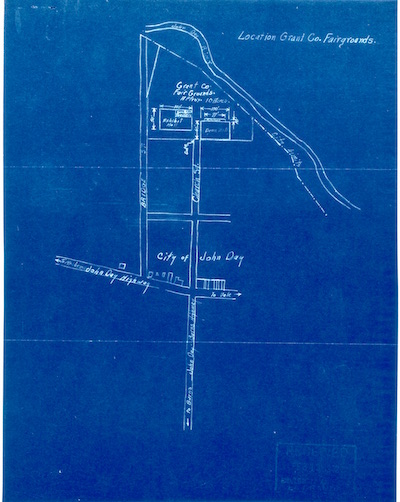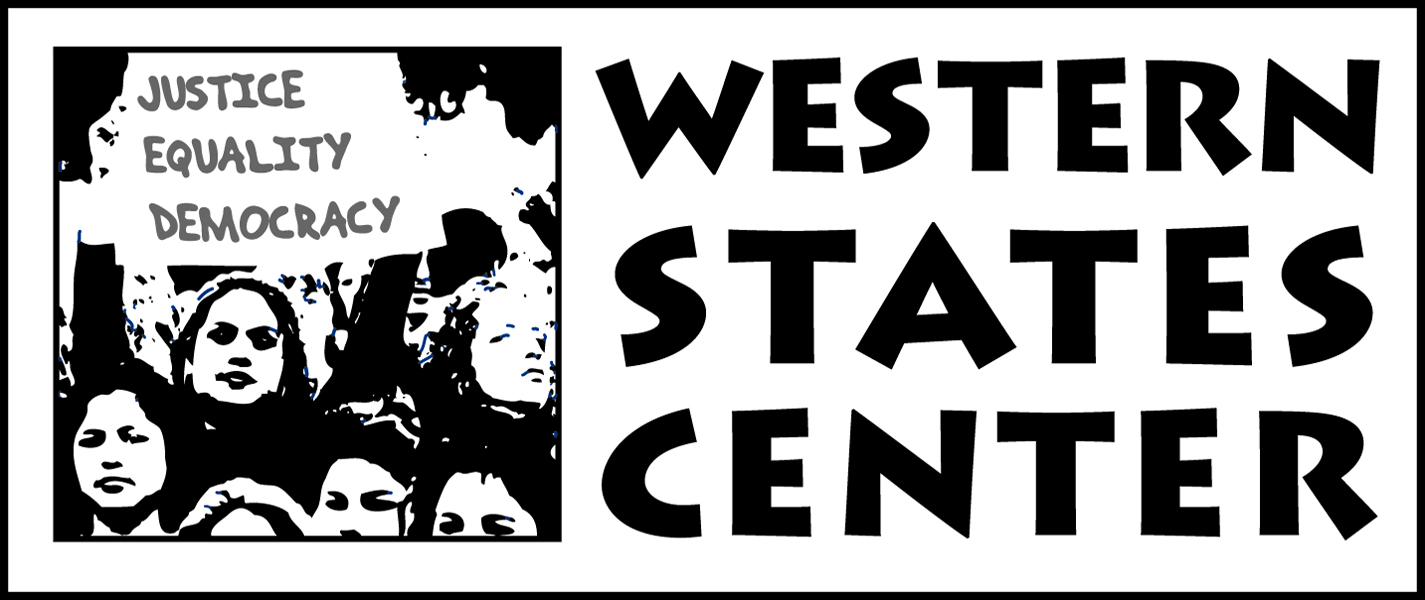Architecture of Internment: The Build Up to Wartime Incarceration
View Exhibit Event Calendar
About
This traveling exhibit explores how Oregonians participated in the decision to incarcerate Japanese Americans and Japanese immigrants during World War II. This is not primarily about the Japanese American experience before, during or after incarceration. Rather, it is the story of how individuals, organizations, businesses and elected officials advocated for the incarceration of Oregonians of Japanese ancestry or stood by while it happened. Those who did stand up before, during and after incarceration, in small and large acts, were especially brave.
The forced removal and imprisonment of 120,000 people of Japanese ancestry from the West Coast – two thirds U.S. citizens – was built, among other things, on wide-spread racism and a commonly held belief in the supremacy of white people, the pursuit of profit and the exploitation of labor, resentment of Japanese American success and a desire for political gain.
For the many Oregonians who wanted to see Oregonians of Japanese ancestry forcibly removed from the state forever, the onset of war with Japan and the myth of sabotage at Pearl Harbor was used to justify this mass incarceration.
In this exhibit you will see:
• Personal letters and proclamations from Oregonians to Governor Sprague in 1941 and 1942, advocating for the exclusion and incarceration of Japanese American Oregonians.
• The Oregon Governor’s response to these letters and proclamations revealing his changing position under political and social pressure.
• Blueprints of potential civilian prison locations such as race tracks and fairgrounds.
• Letters from Japanese Americans responding to this injustice.
The exhibit is available for use nationwide. For more information, contact info(at)grahamstreetproductions.com
What people are saying about this exhibit:
"What Graham Productions has done is more important than merely constructing an exhibit for viewing. They have constructed a story line and have captured a time in history. Most importantly they have produced something that generates emotion, and strong emotion by the viewer, and just as importantly it generates a sensitivity and a care and concern for these people who suffered."
- Matt Stringer, Four Rivers Cultural Center, Ontario, Oregon
"I am amazed by the depth of the research in this presentation. As someone who is familiar with much of the material, I learned more about the widespread involvement of business, citizen's groups and governmental agencies in expelling Oregonians from their homes."
- Valerie Otani, public artist
"It is so heartbreaking and terrifying and so, so important to bear witness to the tragedies of history and today."
- Sherilyn Waxler, immigration attorney
"It made us better understand our own individual histories and allowed us to connect with other communities who have faced discrimination and adversity. Made us feel more connected as API's!"
- Kathy Wai, APANO (Asian Pacific American Network of Oregon)
"It was very moving and emotional."
- Roan Brady, high school student
"It is so thoughtfully put together. So, so stirring, infuriating and empowering to have this all in one place. A tremendous wealth of information is here - and it is devastating and necessary."
- Stephanie Adams-Santos, artist and arts advocate
"The exhibit had tremendous educational value. Many students had assumed that people were uncomfortable with the prospect of Japanese American internment, when in reality, much of the population supported FDR's order. Overall, it was a great experience for the students and one they won't soon forget."
- Peter Gallagher, high school teacher
"One person, Minoru Yasui, was amazing and really wanted the world to realize that it was wrong to treat people differently because of their heritage. He wanted it so badly that he broke the curfew law on purpose and demanded that he go to court. Sadly, he lost the case and had to spend nine months in prison/confinement. I wish more people realized Japanese internment was wrong, so that it could have been avoided altogether."
- 6th grade student
"Even more surprising and shocking was to learn, for the very first time, of the petition letter written by Reverend Inouye (the minister who baptized everyone in my family in Hood River, Oregon). My parents and grandfather's signatures were on that petition. No one who is alive in my family is aware of this petition or that members of our family and neighbours had signed it. The signatures on a letter, begging the Governor of Oregon to spare them from his racist policies, made me aware of the desperation my parents felt at the time of their imminent expulsion from their home in America."
- Diana Morita Cole, Author of Sideways: Memoir of a Misfit
"Independence is a city of approximately 9,000 people. While small, we pride ourselves in having a world view and an interest in how the past informs the present. The Architecture of Internment exhibit was the first of its kind here and, based on feedback from residents, we'll certainly endeavor to bring more such provocative and instructional exhibits to Independence. The work itself was so well done."
- Shannon Cockayne, Heritage Museum, Independence, Oregon
Press:
The Oregonian: Pilgrimage Marks Anniversary of Japanese Internment
Oregon Public Broadcasting: Traveling Japanese Internment Exhibit Makes Stop In Salem
The Argus Observer: Exhibit shows Japanese-Americans' internment 'built on widespread racism'
Polk County Itemizer-Observer: Internment Exhibit On Display At Independence Civic Center
The Skanner News: Muslim Educational Trust to Host Exhibit on Japanese Internment
Cottage Grove Sentinel: 'Architecture of Internment' showing at the library
Funded in part by:
Thank you to our generous sponsors:
Densho: The Japanese American Legacy Project
Oregon Nikkei Endowment
Morel Ink
Exhibit Graphic Design by Bryan Potter Design
Images generously provided by:
Densho: The Japanese American Legacy Project, Oregon Nikkei Endowment,
Los Angeles Times, Oregonian Publishing Co., The Oregon Journal, Oregon Historical Society, Holly Yasui
Government documents:
Oregon State Archives, National Archives and Records Administration, Library of Congress

